Growing peppers
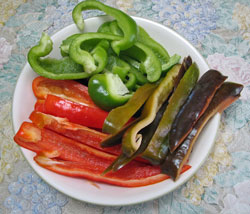 ©Janet Allen Assortment of peppers
©Janet Allen Assortment of peppersWe grow quite a few peppers — enough to eat during the season and enough to store for the rest of the year.
They freeze very well and make a colorful addition to stir fries. We also roast them with potatoes and onions.
We've grown a number of different kinds of peppers, mostly sweet peppers.
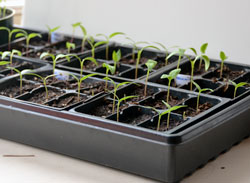 ©Janet Allen
©Janet Allen Starting peppers
Peppers are definitely warm weather crops.
We start them indoors around mid-March in six packs and then repot them in slightly deeper individual pots.
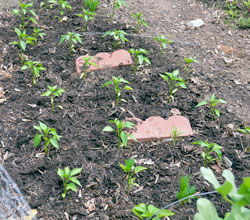 ©Janet Allen
©Janet Allen Young pepper plants
We transplant them 12 to 15 inches apart outdoors around the end of May in a part of the garden that receives full sun.
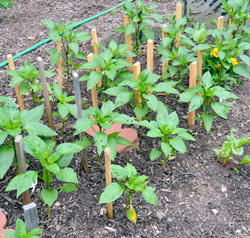 ©Janet Allen
©Janet Allen Staking the peppers
We tie them to short stakes as they grow to keep them from falling over as the fruits enlarge.
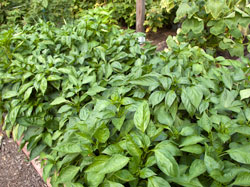 ©Janet Allen
©Janet Allen Mature pepper plants
Peppers don't require much attention other than watering and have always been successful.
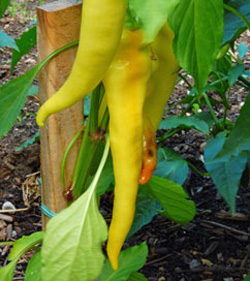 ©Janet Allen Yellow banana peppers
©Janet Allen Yellow banana peppersHow do we get different color peppers?
Many people don't realized that red peppers are just green peppers that have been left on the plant to ripen. They can be used as either green peppers or left on the plant to become red (and sweeter).
Other color peppers, such as this Banana pepper, are different varieties.
Despite the higher costs of specialty peppers in the grocery store, they aren't any more difficult to grow than "regular" green peppers.
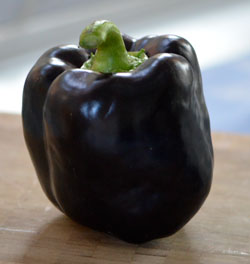 ©Janet Allen
©Janet AllenPurple Beauty
We've moved toward growing more of the darker peppers, such as this "Purple Beauty."
The book Eating on the Wild Side recommends darker vegetables (with some exceptions) since they often have more phytonutrients.
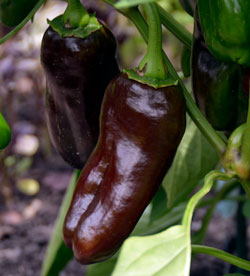 ©Janet Allen
©Janet AllenChocolate peppers
No, it doesn't taste like chocolate, it just has that rich chocolaty color. A great tasting pepper and very productive.
Problems
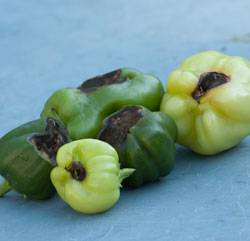 ©Janet Allen
©Janet Allen Blossom end rot
We don't have many problems with peppers, but blossom end rot is one.
We need to add calcium to the soil to prevent this in the future.
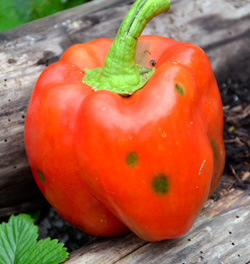 ©Janet Allen
©Janet Allen Pepper spots
We had peppers with these spots in 2014. We don't yet know what the cause is, but we picked them and used them before the spots developed into rot.
Harvest record
| YR | LB | Notes |
| 15 | ||
| 14 | 60 | |
| 13 | 33 | Were in the shaded part of garden; would have been better if they had had more sun |
| 12 | 32 | |
| 11 | 15 | |
| 10 | 28 | |
| 09 | 13 |
